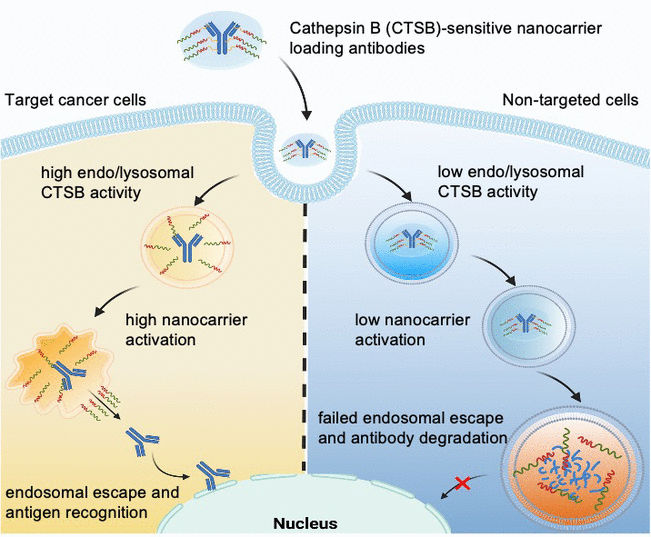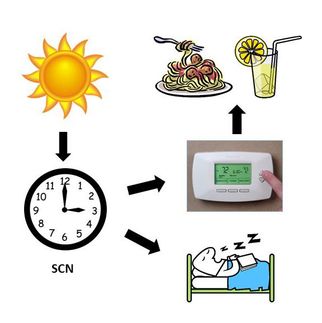Bacterial cells can tell the time
Chronobiologists report that soil bacteria possess an internal clock
Biological processes in many organisms are known resonate with natural rhythms. For instance, it is well known that cellular functions in plants and animals are regulated by an internal ‘circadian’ clock mechanism. Circadian clocks synchronize to environmental cycles such as the natural light-dark cycle. They enable organisms to adapt their physiology to changing environmental conditions – an ability that can provide them with an evolutionary advantage. Although bacteria make up 12% of the Earth’s biomass, have a huge impact on human health and play an increasingly important role in biotechnology, little is known about their chronobiology. Now, LMU chronobiologists Martha Merrow, Zheng Eelderink-Chen and Francesca Sartor together with international collaborators have, for the first time, demonstrated the presence of circadian rhythmicity in a non-photosynthetic bacterium. The discovery promises to provide a deeper understanding of this fundamental process at the molecular level.

Symbolic image
pixabay.com
Up until now, microbiologists have found persuasive evidence for functional internal clocks only in photosynthetic bacteria, such as the cyanobacterium Synechococcus. “This makes sense, since these organisms are dependent on sunlight for their energy,” says Merrow. In order to determine whether non-photosynthetic bacteria also exhibit circadian rhythms, she and her colleagues chose to work with the soil bacterium Bacillus subtilis. This choice was motivated by the fact that this species possesses photoreceptors that respond specifically to blue light and show structural similarities with proteins that are known to form part of the circadian clock found in the fungus Neurospora crassa.
The team used a high-throughput methodology to monitor patterns of gene activity in B. subtilis that was grown either in constant darkness or under a 24-h light/dark cycle. In addition, they examined the effects of 24h cycles in the incubation temperature. They focused their attention on two particular genes – the ytvA gene, which codes for the synthesis of the blue-light-sensitive photoreceptor and the gene kinC, whose protein product is required for the formation of biofilms and spores. “Our analyses show that the expression of both genes synchronizes to the 24h light-dark cycle and then continues to oscillate in constant conditions,” says Merrow. “Our findings thus reveal for the first time that free-living, non-photosynthetic bacteria are able measure the passage of time. They can adapt their molecular processes to the time of day by utilizing light and temperature as zeitgebers.”
The authors of the new study are convinced that many species of terrestrial bacteria exhibit circadian control of cellular activities. Their results not only have implications for the understanding of many basic, cellular processes that have so far been investigated only under static conditions, they might also be of practical relevance in the fields of biotechnology and medicine.
Original publication
Other news from the department science

Get the life science industry in your inbox
By submitting this form you agree that LUMITOS AG will send you the newsletter(s) selected above by email. Your data will not be passed on to third parties. Your data will be stored and processed in accordance with our data protection regulations. LUMITOS may contact you by email for the purpose of advertising or market and opinion surveys. You can revoke your consent at any time without giving reasons to LUMITOS AG, Ernst-Augustin-Str. 2, 12489 Berlin, Germany or by e-mail at revoke@lumitos.com with effect for the future. In addition, each email contains a link to unsubscribe from the corresponding newsletter.
Most read news
More news from our other portals
Last viewed contents

Atomic map of malaria drug gives it new life
Darius_Goes_West

ZEISS to acquire LENSO Sp. z o.o. to strengthen market access and industry expertise in 3D metrology and inspection solutions in Poland

Nanocarrier with Escape Reflex - Tumor-specific drug release through controlled endosomal escape
Mondor's_disease

Newly developed COVID vaccine from Austria could protect against omicron and other variants - Vaccine developed at MedUni Vienna delivers promising data
National_Childbirth_Trust
American_Psychological_Association






















































